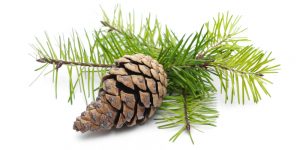It’s easy to confuse some common trees for flowering plants because many types of trees actually do have flowers on them, but not all trees actually produce flowers.
Commonly revered for its pine nuts and evergreen nature, the pine tree is one of the most prolific trees in the world and is a favourite of many people.
And if you’ve been interested in pine trees for some time now, you’ve probably been wondering whether they produce flowers, and if they do, what the flowers look like. Not to worry, this article will give you an exact answer to that question and educate you on a variety of topics related to the pine tree. So keep reading.
Is a Pine Tree a Flowering Plant?

Pine trees do not flower simply because they are members of a class known as gymnosperms. Compared to flowering plants, pine trees are unique since they don’t have an ovary that produces seeds in a flower.
Instead, they have cones that house the seeds that grow after successful pollination. Pine trees produce both male (pollen-bearing) and female (ovulate) cones, but even so, the intention is not to self-pollinate.
So then, how exactly do pine trees reproduce?
Before we dive into the reproduction process of pine trees, let’s first understand what angiosperms and gymnosperms are, and how they differ.
Angiosperms are flowering plants and contain several species. This includes all plants that produce the flowers we are familiar with, such as flowers, shrubs, trees and grasses.
Gymnosperms, on the other hand, are any plant species that don’t possess seeds within their cones. They are also known as “coniferous plants” because they belong to the class of conifers (cone-bearing plants). The main difference between these two classifications lies in how either of them produces their seeds.
Now that we know what the two reproduction classifications mean, let’s go ahead and review the three steps of reproduction for pine trees.
Step 1
The first and most crucial step of reproduction in pine trees is pollination. Successful pollination will only occur when pollen has been transferred from male to female cones. Since the male cones grow below the female cones (these grow high up on the pine tree), the plant does not self-pollinate.
As such, an external agent such as wind is needed to carry pollen from the male cones to the female cones. At this point, the first step of reproduction is complete.
Step 2
After pollination, female cones will then proceed to produce fertile seeds while the cone is closed. This is a process that can take an average of two years to complete.
As the process comes to an end, the cone will start opening up, which is how the scales that we see on the cones are formed. Once the cone is open, there will be a seed at the bottom of each scale.
It’s good to keep in mind, however, that there are some types of cones that will remain closed. Such cones will only open up when they are exposed to very high temperatures such as those from a forest fire. It’s only when such conditions are met that the seeds will get dispersed.
Step 3
The last step of reproduction in pine trees is seed dispersal. This process also required external agents such as wind or wildlife. When animals feed on the seeds, they will potentially dispose of them quite a distance from the tree.
Sometimes, the cones will be knocked off the tree, and as they fall and roll on the ground, the seed will disperse.
How often do pine trees produce cones?
The amount of time that it takes a pine tree to produce cones will vary depending on the type of tree that is in consideration. In most cases, however, it takes an average of two to three years for a pine tree to produce mature cones.
In some cases, the trees can change the rate and time of cone production to avoid predators that are after eating the nutritious seeds that are protected by the pinecones. When the conditions are right, however, the trees will be more comfortable opening up, so that they can release the seeds that are ready to get dispersed.
Pine tree Uses
Pine trees have a variety of uses and have been used in many industries throughout history.
While pine trees can be used as a building material, they are also very popular in the landscaping industry. A variety of pine trees can be used as distinctive features such as windbreaks or screens, even on golf courses.
They are also of great value when it comes down to the naturalisation of land and acreage that is being developed into parks, recreational areas and more.
The production of pine cones, pine nuts and cones that house the seeds for pine trees are also quite significant. The nuts from pine trees are known to be nutritious, which explains why they are a delicacy to both animals and humans.
But even though pine trees have their advantages, they have also had a negative impact on the environment in some cases. The gases that they give off are known to react with airborne chemicals that are the result of human activity, creating small invisible particles known as aerosols that pollute the air.
Related Article: Fastest Growing Pine Trees in Michigan
